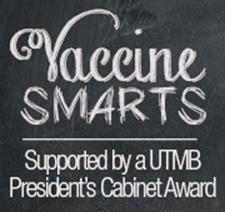
Dear Vaccine Smarts,
The CDC came out and stated that this season’s flu vaccine is less effective than normal because of a mismatch.
What does that mean? How did it happen?
Don
Texas City, Texas
Dear Don,
Traditional flu vaccines protect from three strains of the flu while the newest formulations offer protection from four strains. A mismatch occurs when the current vaccine does not cover the predominant flu strains circulating around a community.
Many flu strains circulate every flu season. The strains differ across regions of countries and around the globe. Information about the different strains is collected by 141 flu-monitoring centers located in 111 countries. They collect information about flu activity and severity in their communities. Additionally, these centers send virus specimens to the World Health Organization influenza collaborating centers to perform analysis of the strains. One such collaborating center is the Centers for Disease Control laboratory in Atlanta.
The information about activity, severity and strains are followed throughout the year. So far this season almost 90 percent of the flu circulating in the U.S. are H2N3 strains. Only 32 percent of the H2N3 viruses tested from this flu season are the strain covered by the vaccine. Most of the rest are a H2N3 strain that is a slightly “drifted” or mutated form of the H2N3 strain in the vaccine. Many researchers believe that although the vaccine may not prevent people from catching this strain, it may keep vaccinated people from getting as sick.
The World Health Organization makes a recommendation about the strains to be included for the next season. Our FDA makes the final decision about which strains will be in U.S. vaccines. The mismatch occurred because the decision about the strains was made last February based on forecasts from data about two thirds of the way through last season. The decision must be made early because flu vaccine manufacturing is a labor intensive and time-consuming process.
Forecasting the next season is not easy. Scientists have to look at what strains are most common and which seem to be spreading through communities. The process is similar to wagering on a horse race based on the horses’ positions two-thirds of the way through their last race. Vaccine mismatches are a serious matter increasing the number of people missing school or work and resulting in more physician visits, hospitalizations and deaths.
Researchers are trying to improve the forecasts by using the growing body of knowledge about flu strains, our immune systems and population dynamics. Still, the underpinnings of the mismatch problem will persist. The real answer is a universal vaccine that covers all flu strains. It couldn’t come too soon.
Vaccine Smarts is a UTMB column from the Sealy Center for Vaccine Development dedicated to answering questions about vaccines. The column is published in the Galveston Daily News.
For more information, email vaccine.smarts@utmb.edu or check out the VaccineSmarts Facebook page or follow us on Twitter @VaccineSmarts.
Dr. Richard Rupp is a pediatrician and member of UTMB’s Sealy Center for Vaccine Development. Bridget Hawkins, Ph.D., is an associate profesor of anesthesiology and a member of the Sealy Center for Vaccine Development. This column is supported by a UTMB President’s Cabinet Award to provide information about vaccines. Visit www.utmb.edu/scvd/vaccinesmarts.